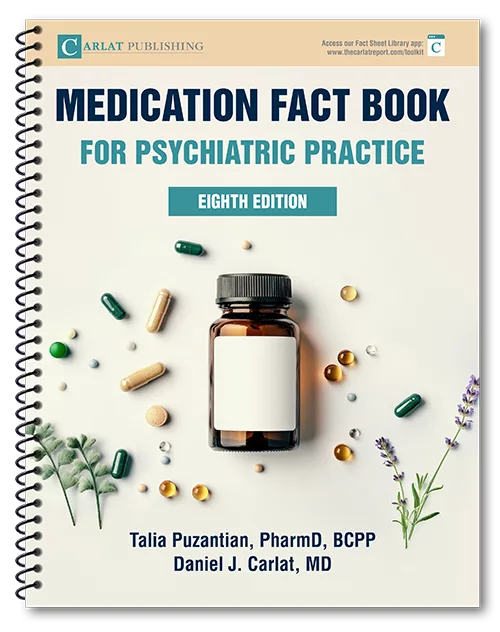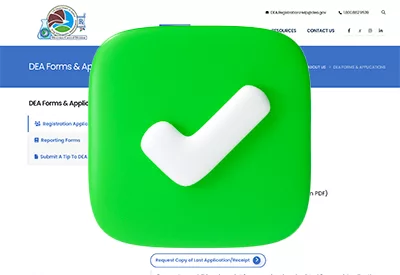Buprenorphine and Dental Issues
 Talia Puzantian, PharmD, BCPP.
Talia Puzantian, PharmD, BCPP.
Deputy editor for The Carlat Addiction Treatment Report. Professor, Keck Graduate Institute School of Pharmacy. Claremont, CA.
Dr. Puzantian has no financial relationships with companies related to this material.
CATR: Can you give us a rundown of the recent FDA communication?
Dr. Puzantian: Last January, the FDA put out a safety communication about the risks of dental problems with certain buprenorphine products, specifically the buccal films and the sublingual tablets and films (www.tinyurl.com/mpz5w52f). It stated that these formulations could increase the risk of dental cavities, abscesses, and infections, which could require serious interventions, including extractions.
CATR: What sort of data is this based on?
Dr. Puzantian: It was based on post-marketing reports to the FDA from 2002 to 2018. Over those 16 years, there were 305 cases of dental issues. The FDA communication didn’t include a breakdown of specific problems, though we know they included tooth decay, loss, erosion, fractures, cavities, abscesses, and infections.
CATR: How might buprenorphine cause dental problems?
Dr. Puzantian: It’s not completely clear, but there are likely two mechanisms at play. First, buprenorphine can lower the pH inside the mouth, at least transiently. Second, buprenorphine can interfere with the pH-buffering capacity of saliva (Suzuki J et al, Prim Care Companion CNS Disord 2013;15(5):PCC.13l01533), which can alter oral flora and increase bacterial growth. Buprenorphine also has some anticholinergic properties, which could lead to dry mouth, and we know that having dry mouth increases incidence of cavities. Of course, this isn’t specific to sublingual buprenorphine, so it’s likely not the main mechanism.
CATR: There was a lot of controversy when this communication came out. What were some of the arguments on both sides?
Dr. Puzantian: The American Society of Addiction Medicine (ASAM) wrote an open letter that was very critical of the FDA and called on them to retract their statement (www.tinyurl.com/42n4eub8). Their argument was that buprenorphine is a very safe and effective treatment that saves lives yet is vastly underutilized. In fact, only about one in 10 people receive the treatment they need for opioid use disorder (Krawczyk N et al, Int J Drug Policy 2022;110:103786). There is already a high barrier to accessing buprenorphine: lack of providers, stigma, even low medication availability. We just published a study showing that fewer than 50% of the pharmacies across the country have buprenorphine stocked and available to dispense (Hill LG et al, Drug Alcohol Depend 2022;237:109518). So even if a patient gets a prescription, it’s likely that they won’t be able to fill it. Meanwhile, over 100,000 people die of opioid overdoses each year. The ASAM’s argument is that this communication will discourage people from accessing the medicine, when we should be doing the opposite.
CATR: Part of the controversy came from the fact that the communication was based on only 305 cases over 16 years, right?
Dr. Puzantian: Yes, exactly. Over 2 million people were taking buprenorphine in 2020 alone, encompassing 16 million prescriptions. So it’s a small subset of patients that are developing dental problems. And of course, association doesn’t mean causation. We don’t know that the buprenorphine caused these problems. Remember, there was no control group here. Also, 91% of the 305 reported cases had preexisting dental problems, and the mean time between starting buprenorphine and reported dental complications was two years. A lot can happen in that time. So there are many potential confounders.
CATR: And what about arguments on the other side?
Dr. Puzantian: You have to remember that these cases are being reported entirely voluntarily. So it’s likely the incidence is higher, perhaps much higher. The FDA acts on that assumption, and by alerting providers, there is hope that we can get higher-quality data. In fact, a retrospective cohort study was recently published that did find a modest increase in dental issues in patients taking sublingual buprenorphine versus the transdermal patch or injectable naltrexone (Etminan M et al, JAMA 2022;328(22):2269–2271). And the FDA may go back and review new data. They have been known to revise or even reverse their warnings. In this case, the communication did say that the benefits for using buprenorphine outweigh these risks, though many worry that this caveat was insufficient and that the damage has already been done.
CATR: Are there any other important pieces to the communication?
Dr. Puzantian: Well, the FDA recommended that prior to starting buprenorphine, all patients should get a baseline dental exam followed by regular dental follow-up. This is certainly something to aim for, but the likelihood of it happening all the time is pretty low and could pose yet another barrier to access.
CATR: Do different buprenorphine formulations confer varying levels of risk?
Dr. Puzantian: Not that we know of. The communication specified sublingual formulations, so injectable and transdermal patches are OK for now. Tablets have been around the longest, so it’s likely that most patients included in the report were receiving tablets, but that isn’t specified in the report.
CATR: Do you think that this warning should change clinical practice?
Dr. Puzantian: Not really. In an ideal world, all our patients would practice good oral hygiene, they would have access to high-quality dental care, and prescribers would have time to counsel patients about these risks. In reality, time is often limited and other aspects of treatment are more important. But, if there is time, prescribers should inform patients that dental issues are a potential side effect, just as they should warn of potential side effects for any other medication. Certainly, refer patients to dental care if they have access to it. And, most importantly, counsel patients about proper dental hygiene and how to minimize the risk of developing dental issues.
CATR: And how should patients minimize the risk?
Dr. Puzantian: Luckily, the advice is straightforward and easy to follow. Once the dose is completely dissolved (a minute or so for sublingual films, five or 10 minutes for tablets, up to 30 minutes for buccal formulations), patients should take a large sip of water, swish it gently around their teeth and gums, and swallow.
CATR: Should they brush their teeth?
Dr. Puzantian: Actually no, not for at least an hour. The thought behind this recommendation is that acidic pH can make teeth more susceptible to mechanical damage, which brushing can contribute to. Waiting at least an hour to brush allows the mouth to return to its natural state pH-wise. So really, the best thing to tell patients is simply to give their mouth a good rinse with plain water right after each dose is dissolved.
CATR: Thank you for your time, Dr. Puzantian.

Newsletters
Please see our Terms and Conditions, Privacy Policy, Subscription Agreement, Use of Cookies, and Hardware/Software Requirements to view our website.
© 2025 Carlat Publishing, LLC and Affiliates, All Rights Reserved.


_-The-Breakthrough-Antipsychotic-That-Could-Change-Everything.webp?t=1729528747)



